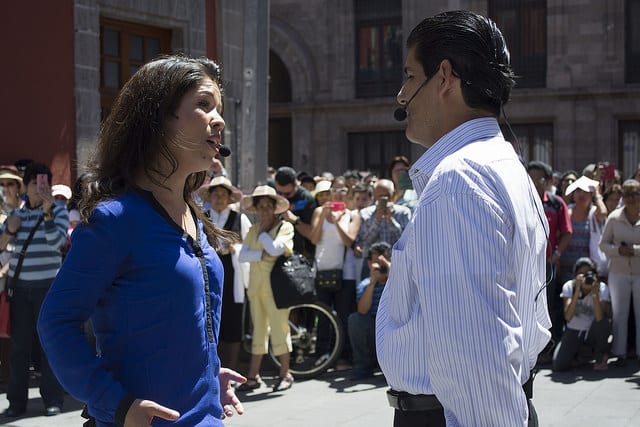Energy, infrastructure, transport, land use, industry, and finance: the New Climate Institute released a report on April 10th detailing the mandatory steps that the world must take by 2020 to avoid a climate disaster. 2020, according to experts, must highlight the “climate turning point.” Despite the implosion of multilateral initiatives once led by the United States, real changes require an extraordinary collaboration with leaders and citizens in many countries who may be unwilling to make the real changes required of them. To win over skeptics across the globe wary of actions that may reap economic havoc, we need to re-frame messaging to focus on the economic, social, and security advantages of micro-level climate change action and emphasize the extent to which acting on key issue areas is in the best interest of every global citizen and leader.

There are countless examples of U.S. communities making difficult decisions and seeing huge payoffs. on the local scale, governments and businesses are leading the way – and their case studies offer compelling arguments for developing economies and communities already feeling the effects of climate change. In communicating with skeptical global audiences, we should promote local-level initiatives and incorporate the following messaging strategies that are demonstrated to be effective and will highlight American capability.
The move to renewable energy isn’t just about sustainability; it is an economic imperative.

Developing countries, even if they have intentions to act sustainably and fall into step with global climate change agreements, have one overarching issue: where to get enough energy to grow their economies. Nonrenewable resources like coal and oil don’t just contribute profoundly to climate change; their price fluctuations are more dramatic than wind energy and even oil companies like Exxon can see that the future lies in renewable energy. While the United States may have volatile rhetoric surrounding issues like taxes on carbon and divesting, its state and local leaders are moving ahead on sustainability despite skeptical public opinion because it is economically feasible and necessary. Fargo, North Dakota launched an initiative to harness methane energy from a local landfill, using decomposing garbage to power households and businesses alike. The results are impressive: the landfill is set to accrue more than $370 million annually and generates more than 17,000 kilowatt hours daily for the community. In Texas, a state politically resistant to climate change discussions, there are more than 10,000 wind turbines that supply the state with a power capacity of over 18,000 megawatts. Georgetown, Texas – a highly conservative town – was one of the first to become a city run entirely on renewable energy. Framed as an economic issue (wind fluctuates in price very little), Texan municipal and state governments were able to become the leading wind energy producers in the United States. These are not examples of economically-minded communities: they are largely conservative communities, skeptical of overt environmentalism, but enthusiastic about the prospects of local economic development. Especially at a time when smallholder farmers are suffering in the developing world as a result of drought and climate disasters, wind turbines (which take up relatively little space and offer substantial returns on investment) can be an attractive income source.
Taking steps to mitigate water crises can be a substantial tool in countering violent extremism.
Drought is a major contributor to recruitment in violent extremist groups and preventing the humanitarian tragedies that result from water crises is in the best interest of all countries involved in the fight against terrorism. Most importantly, addressing water crises effectively and with sustainability in mind is a security strategy that doesn’t require military action. It is also supported by research and declarations from the Pentagon: climate change is a threat multiplier that makes military operations more challenging and bolsters recruitment for extremist groups like the Islamic State and Al Qaeda.
These are serious threats to countless communities, and even those unwilling to admit the human sources of climate change may be willing to come to the table and discuss creative drought mitigation techniques. California’s water reuse programs recycle over 525,000 acre-feet of wastewater each year, 48 percent of which is used for agricultural irrigation. Efforts to capture rainwater have also been promoted with the passage of legislation allowing individuals and companies to reuse water for landscaping purposes. These steps could support agriculture, mitigate the most serious impacts of climate change, alleviate poverty, and work to counter violent extremism.
Land use reform and sustainable infrastructure bring efficiency and better quality of life.
Research has found that urban sprawl has a stronger correlation with CO2 emissions than GDP, Barriers to easy and reliable public transportation have tangible consequences: they lower productivity, limit job possibilities, jeopardize public health due to pollution, and prevent individuals from entering economic markets. Sustainable urbanization – ranging from green roof construction to planning walkable or easily trafficked cities – can be presented as a quality of life issue, not an impossible demand made by a hypocritical foreign power. In reality, our cities are making these changes. These are issues that do not need to focus on economic losses, but gains. Successes in land use reform and sustainable city development can also highlight American ingenuity and credibility.
The United States is a leader in sustainability and foreign professionals can learn more about their strategies through exchanges.

While some professional exchange programs through the State Department’s Bureau of Educational and Cultural Affairs are geared towards technology fields and general economic empowerment, more need to address the unique issues associated with sustainable development specifically. The above messaging solutions can only work if they are paired with policy objectives, and programs connecting local foreign leaders with the trailblazers creating sustainable solutions in the United States would jumpstart these strategies. Sustainability and climate change action are multidisciplinary, and exchanges that bring together not just academics but engineers, community leaders, farmers, and communicators would offer an optimistic alternative to traditional diplomatic approaches to climate change. The examined messaging strategies could show global communities how our cities – big and small – are making changes that aren’t sacrifices for the environment but life-improving developments for citizens. Sustainability and economic development can go hand-in-hand, and these approaches could take strides in improving images of the United States.


 Former Secretary of State, John Kerry, at White House Summit to Counter Violent Extremism (on usa.gov)
Former Secretary of State, John Kerry, at White House Summit to Counter Violent Extremism (on usa.gov)  Centers for Disease Control and Prevention Global Health Security Campaign (usa.gov)
Centers for Disease Control and Prevention Global Health Security Campaign (usa.gov) Dr. Deborah L. Birx, current U.S. Global AIDS Coordinator and U.S. Special Representative for Global Health Diplomacy with Former Secretary of State, John Kerry (usa.gov).
Dr. Deborah L. Birx, current U.S. Global AIDS Coordinator and U.S. Special Representative for Global Health Diplomacy with Former Secretary of State, John Kerry (usa.gov). 







 Here, we see President Barack Obama tweeting.
Here, we see President Barack Obama tweeting.















